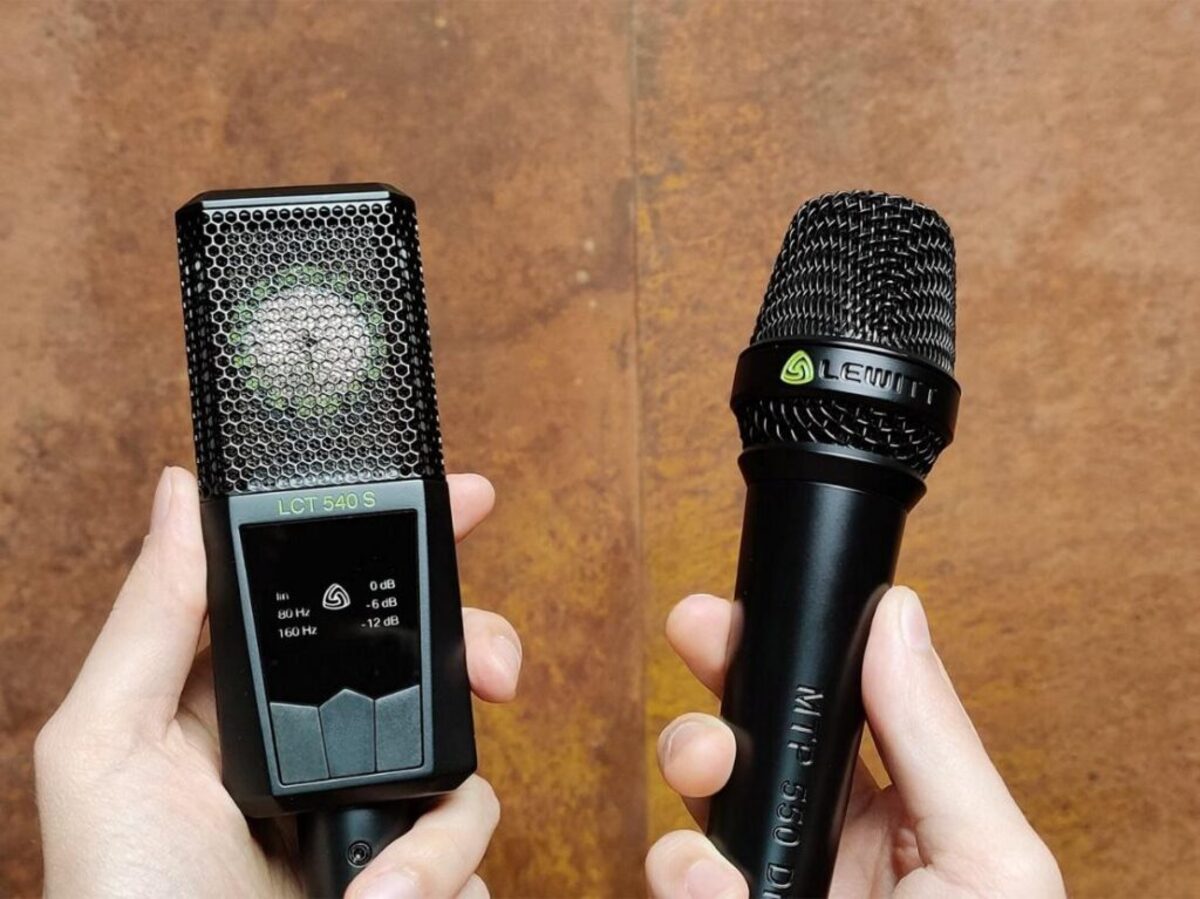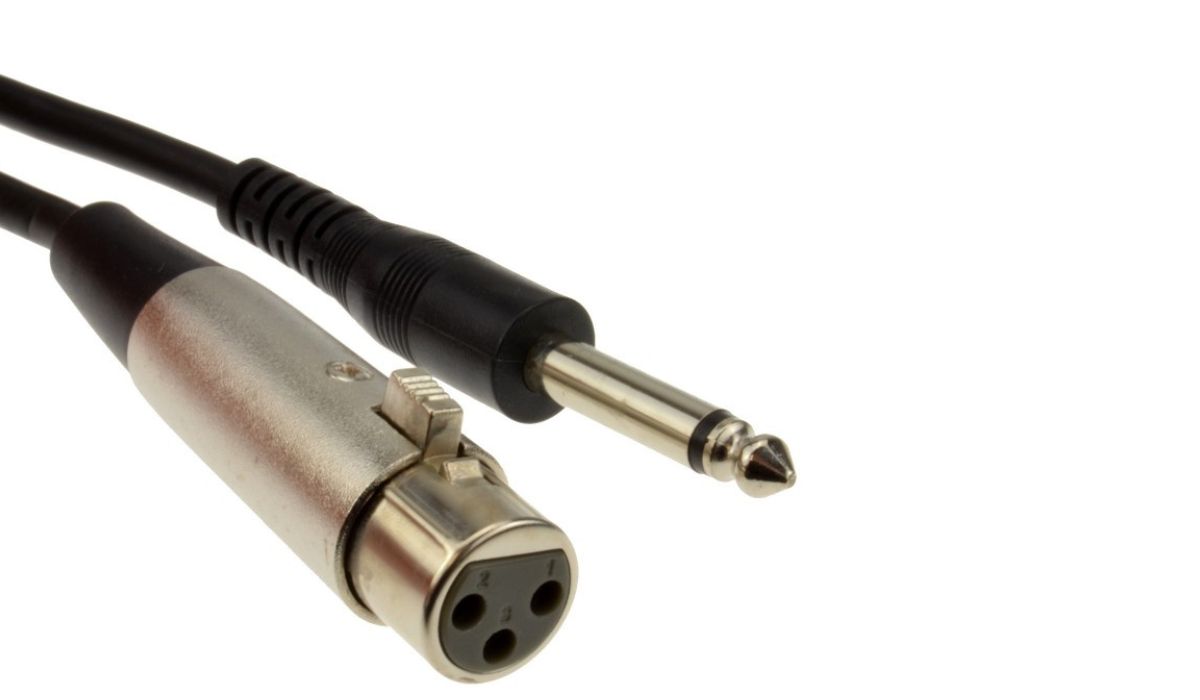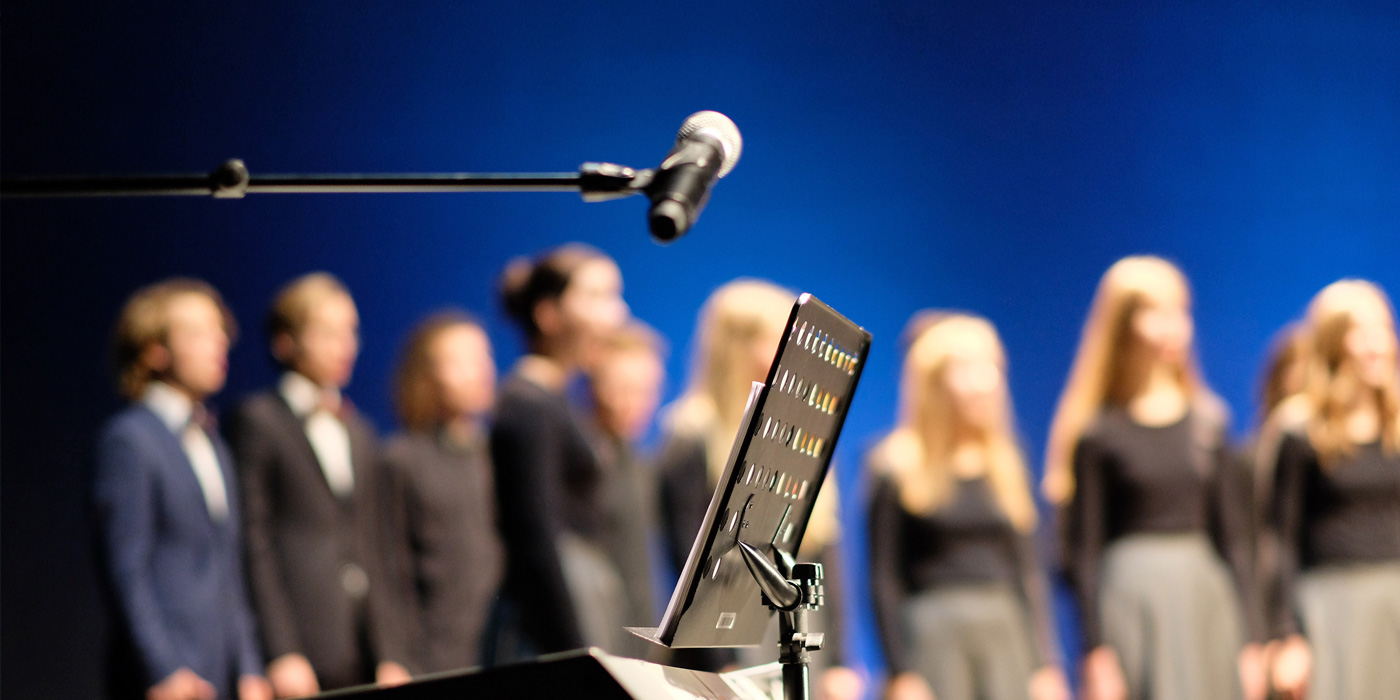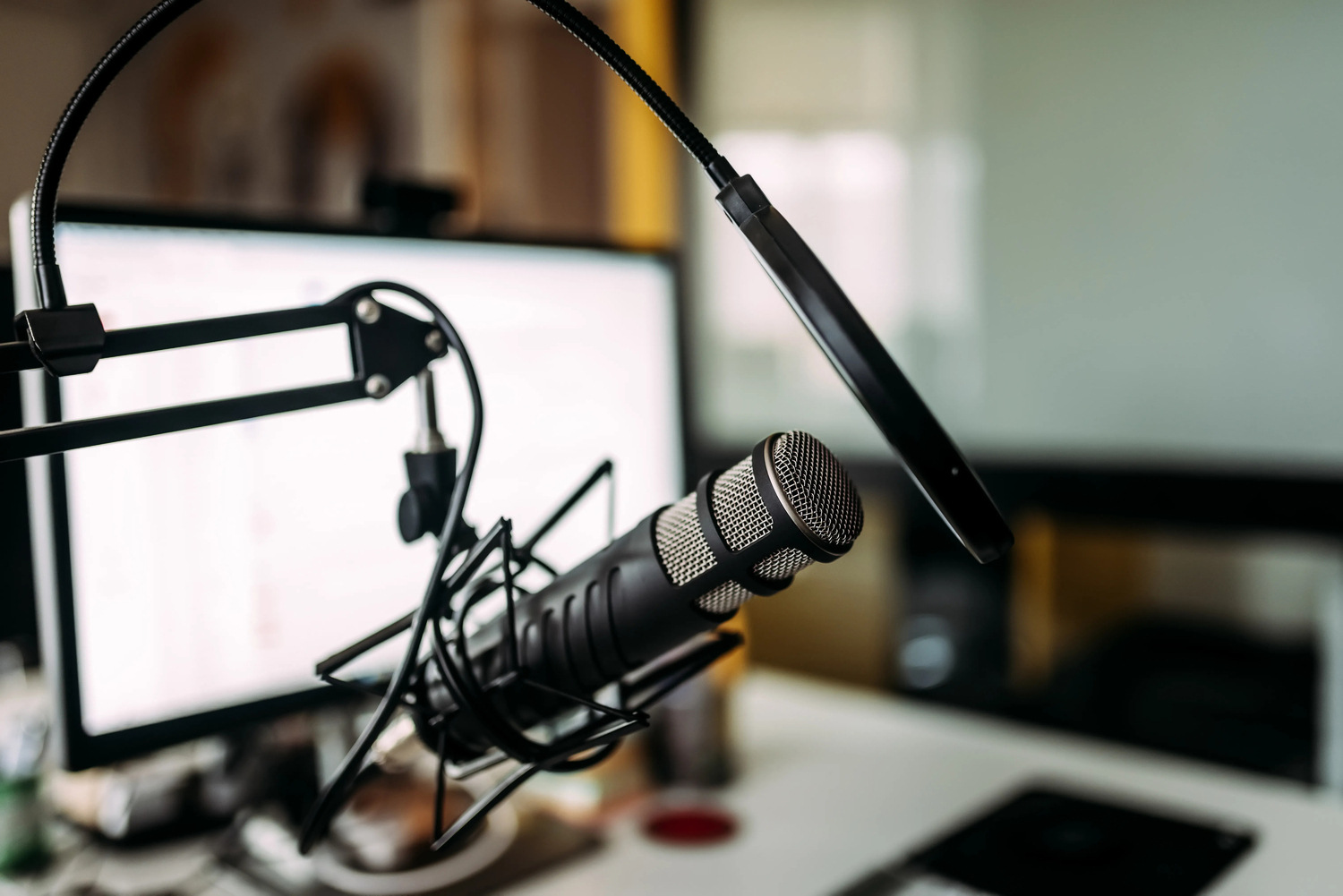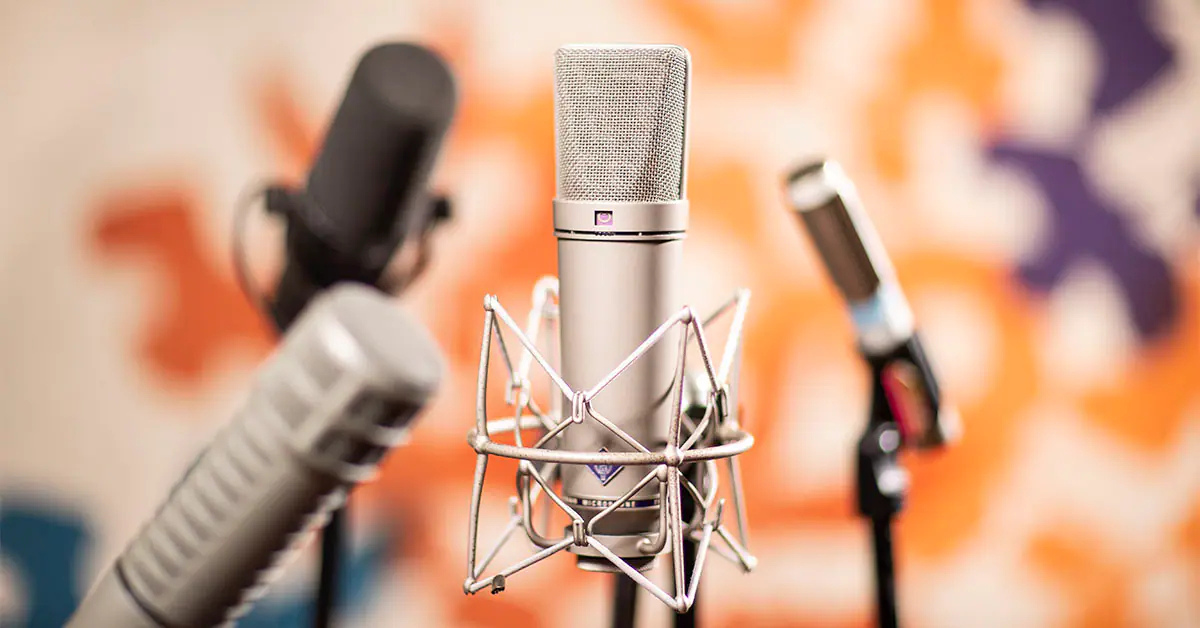Home>Devices & Equipment>Microphone>What Is A Lavalier Microphone
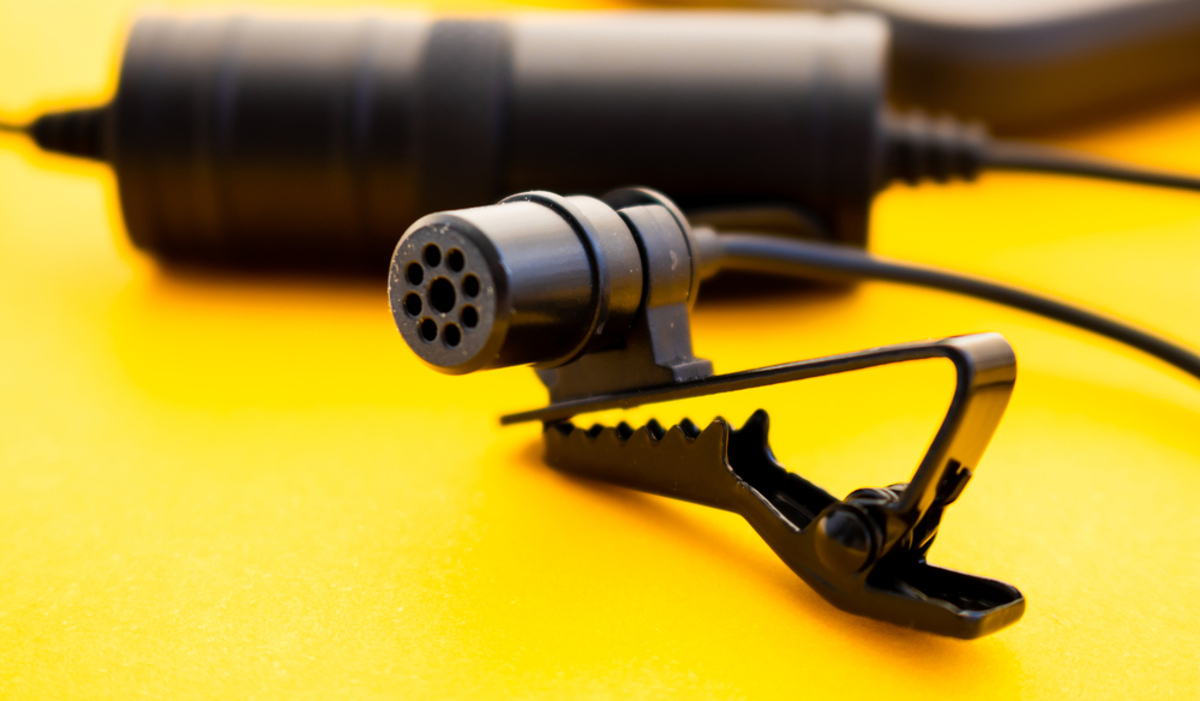

Microphone
What Is A Lavalier Microphone
Modified: March 12, 2024
Discover the benefits of using a lavalier microphone and how it can enhance your audio recordings. Learn about the features and uses of this versatile microphone. Ideal for content creators and professionals.
(Many of the links in this article redirect to a specific reviewed product. Your purchase of these products through affiliate links helps to generate commission for AudioLover.com, at no extra cost. Learn more)
Table of Contents
Introduction
Lavalier microphones, also known as lapel mics or lav mics, are compact, versatile audio devices that have become ubiquitous in various professional settings. From television broadcasts and live performances to public speaking engagements and film productions, lavalier microphones offer a discreet yet powerful solution for capturing clear, high-quality audio. These pint-sized microphones have gained popularity for their ability to deliver pristine sound while remaining inconspicuous, making them an invaluable tool for content creators, presenters, and performers.
In this comprehensive guide, we will delve into the world of lavalier microphones, exploring their functionality, types, advantages, and potential drawbacks. Whether you're a seasoned audio professional or a newcomer to the realm of microphones, this article aims to provide valuable insights into the inner workings and practical applications of lavalier microphones.
Throughout this exploration, we will uncover the intricacies of lavalier microphones, shedding light on their diverse uses and the factors that set them apart from other microphone types. By understanding the unique capabilities and limitations of lavalier microphones, readers will gain a deeper appreciation for the role these diminutive yet mighty devices play in shaping modern audio production and communication.
Join us as we embark on a journey to unravel the mysteries of lavalier microphones, uncovering the magic behind their unobtrusive design and exceptional audio capture capabilities. Whether you're considering investing in a lavalier microphone or simply seeking to expand your knowledge of audio technology, this guide is your passport to unlocking the potential of these remarkable audio tools.
What is a Lavalier Microphone?
A lavalier microphone is a small, lightweight audio capture device designed to be worn on the body, typically attached to the clothing of the speaker or performer. Its unobtrusive nature makes it a popular choice for scenarios where a traditional handheld microphone or stationary microphone setup may be impractical or visually obtrusive. Lavalier microphones are commonly used in television and film production, live stage performances, public speaking engagements, and various other applications where capturing clear, natural-sounding audio is essential.
These microphones are often favored for their ability to pick up the speaker’s voice with exceptional clarity while minimizing background noise and unwanted sound artifacts. By positioning the microphone in close proximity to the speaker’s mouth, lavalier microphones excel at capturing vocal nuances and delivering a natural, intimate sound quality. This makes them invaluable tools for capturing engaging dialogue, interviews, and live performances, where preserving the authenticity and subtleties of the speaker’s voice is paramount.
One of the defining features of lavalier microphones is their discreet form factor, which allows them to blend seamlessly into the attire of the wearer. This inconspicuous design minimizes visual distractions during presentations or performances, enabling the audience to focus on the speaker without being distracted by visible microphones or cables. Additionally, the hands-free nature of lavalier microphones provides the speaker or performer with greater freedom of movement, allowing them to gesture naturally and interact with their environment without being tethered to a microphone stand or handheld device.
Overall, lavalier microphones offer a compelling combination of portability, unobtrusiveness, and high-quality audio capture, making them a staple in the arsenal of audio professionals and performers seeking a versatile and reliable solution for capturing pristine sound in diverse environments.
How Does a Lavalier Microphone Work?
Despite their diminutive size, lavalier microphones harness sophisticated technology to capture clear, articulate sound. These miniature marvels operate on the same fundamental principles as traditional microphones, albeit with a focus on portability and discretion. At the core of a lavalier microphone’s functionality lies a miniature diaphragm, which converts sound waves into electrical signals, ultimately translating acoustic vibrations into audible output.
When a speaker or performer dons a lavalier microphone, the device is strategically positioned in close proximity to the mouth, ensuring optimal sound capture. As the speaker articulates, the sound waves emanating from their voice interact with the lavalier microphone’s diaphragm, causing it to vibrate in response to the incoming acoustic energy. This vibration is then converted into an electrical signal through the process of transduction, where the mechanical motion of the diaphragm is transformed into a corresponding electrical signal that mirrors the original sound waves.
The electrical signal generated by the lavalier microphone is then transmitted through a cable or wireless connection to an audio recording device or sound system, where it is amplified and processed to produce a faithful reproduction of the speaker’s voice. This seamless transmission of audio signals allows lavalier microphones to capture the nuances and intricacies of speech and vocal performance, delivering a natural and immersive sound experience for listeners.
Furthermore, lavalier microphones often feature built-in components to mitigate unwanted noise and interference, such as wind noise and handling noise. Some models incorporate foam windscreens or miniature shock mounts to minimize the impact of environmental factors on audio quality, ensuring that the captured sound remains pristine and free from distracting artifacts.
By leveraging advanced acoustic engineering and compact design, lavalier microphones empower speakers and performers to express themselves with confidence, knowing that their voices will be faithfully captured and projected to their audience with exceptional clarity and fidelity.
Types of Lavalier Microphones
Lavalier microphones are available in a variety of configurations, each tailored to specific applications and user preferences. Understanding the different types of lavalier microphones can help users make informed decisions when selecting the most suitable option for their audio capture needs. Here are some common types of lavalier microphones:
- Wired Lavalier Microphones: Wired lavalier microphones connect directly to an audio recording device or sound system via a physical cable. These microphones offer a reliable and straightforward solution for capturing high-quality audio, making them well-suited for situations where wireless connectivity is not a priority. Wired lavalier microphones are often favored for studio recording, broadcast journalism, and live sound reinforcement applications.
- Wireless Lavalier Microphones: Wireless lavalier microphones provide enhanced mobility and flexibility by transmitting audio signals to a receiver unit wirelessly. This freedom of movement is particularly advantageous in live performance settings, where performers can move about the stage without being encumbered by cables. Wireless lavalier microphones are popular in theater productions, corporate presentations, and video production, offering seamless integration with cameras and audio systems.
- Omni-directional Lavalier Microphones: Omni-directional lavalier microphones capture sound from all directions, making them versatile for capturing a wide range of audio sources. These microphones excel in capturing natural ambiance and spatial sound, making them suitable for interviews, documentaries, and immersive audio recording applications.
- Directional Lavalier Microphones: Directional lavalier microphones, also known as cardioid lavalier microphones, are designed to prioritize sound capture from the front while attenuating off-axis noise. This focused pickup pattern makes them ideal for situations where background noise rejection and vocal isolation are critical, such as live events and noisy environments.
- Miniature Lavalier Microphones: Miniature lavalier microphones feature compact designs that are discreet and lightweight, making them virtually invisible when worn. These microphones are popular in film and television production, where minimizing visual distractions is essential for maintaining the illusion of reality.
Each type of lavalier microphone offers distinct advantages and considerations, allowing users to tailor their microphone selection to the specific demands of their audio recording or performance scenarios. By understanding the characteristics and capabilities of different lavalier microphone types, users can make informed choices that align with their unique audio capture requirements.
Advantages of Using a Lavalier Microphone
Lavalier microphones offer a host of benefits that make them indispensable tools for a wide range of audio capture scenarios. Their compact size, unobtrusive design, and exceptional audio performance contribute to their widespread popularity among content creators, presenters, and performers. Here are some key advantages of using a lavalier microphone:
- Discreetness: Lavalier microphones are discreet and inconspicuous, allowing speakers and performers to maintain a polished and professional appearance without being encumbered by visible microphones or bulky equipment. This unobtrusive design minimizes distractions and enhances the visual presentation of the speaker or performer, making lavalier microphones ideal for broadcast television, live events, and public speaking engagements.
- Hands-Free Operation: Lavalier microphones enable hands-free operation, freeing the speaker or performer to gesture naturally and engage with their audience without being tethered to a microphone stand or handheld device. This mobility and freedom of movement are particularly advantageous in live performances, where dynamic interaction with the audience is essential.
- Clear Vocal Capture: Lavalier microphones excel at capturing the speaker’s voice with exceptional clarity, delivering natural and articulate vocal reproduction. By positioning the microphone in close proximity to the mouth, lavalier microphones minimize ambient noise and focus on capturing the nuances of the speaker’s voice, ensuring that every word is heard with pristine fidelity.
- Flexibility: With both wired and wireless options available, lavalier microphones offer flexibility to accommodate diverse audio production and performance needs. Wireless lavalier microphones provide enhanced mobility, making them ideal for stage performances and on-location video shoots, while wired lavalier microphones offer a reliable and straightforward solution for studio recording and broadcast applications.
- Professional Audio Quality: Despite their compact size, lavalier microphones deliver professional-grade audio quality, making them a go-to choice for capturing dialogue, interviews, and vocal performances. Their ability to faithfully reproduce the speaker’s voice with exceptional fidelity ensures that the captured audio maintains its integrity and authenticity.
By leveraging these advantages, lavalier microphones empower users to capture pristine audio with ease and precision, enhancing the overall quality and impact of their presentations, performances, and audio recordings.
Disadvantages of Using a Lavalier Microphone
While lavalier microphones offer numerous advantages, they also present certain limitations and considerations that users should be mindful of when employing these compact audio capture devices. Understanding the potential drawbacks of lavalier microphones can help users mitigate challenges and optimize their audio recording and performance experiences. Here are some notable disadvantages of using a lavalier microphone:
- Clothing Interference: Lavalier microphones, especially wired models, can be susceptible to clothing rustle and friction noise when positioned in close proximity to the speaker’s attire. This can result in unwanted sonic artifacts that detract from the clarity of the captured audio. Proper placement and the use of accessories such as clips and mounts are essential for minimizing clothing interference.
- Feedback and Interference: In wireless lavalier microphone setups, there is a potential risk of radio frequency interference and signal dropout, particularly in crowded RF environments. Additionally, feedback issues may arise if the microphone is positioned too close to loudspeakers or monitor systems. Careful frequency management and sound system configuration are crucial for mitigating these challenges.
- Battery Dependency: Wireless lavalier microphones rely on battery power for operation, and a depleted battery can lead to unexpected audio dropout or complete microphone failure. Users must remain vigilant in monitoring battery levels and ensuring that spare batteries or rechargeable power sources are readily available to avoid interruptions during performances or recordings.
- Limited Bass Response: Due to their miniature diaphragm size and compact design, lavalier microphones may exhibit limited bass response compared to larger microphone types. While they excel at capturing mid-range and high-frequency content, the low-frequency extension of lavalier microphones may be less pronounced, impacting the fullness and depth of certain vocal and instrumental sources.
- Positioning Challenges: Achieving optimal microphone placement is crucial for maximizing the audio quality of lavalier microphones. Improper positioning can result in muffled or uneven sound capture, requiring careful attention to microphone placement and orientation relative to the speaker’s mouth for optimal results.
By acknowledging these potential disadvantages and implementing strategies to address them, users can harness the strengths of lavalier microphones while mitigating the associated challenges, ensuring that their audio capture endeavors yield exceptional results.
Tips for Using a Lavalier Microphone
Maximizing the potential of a lavalier microphone requires careful attention to detail and strategic implementation of best practices. Whether capturing dialogue for a film production or delivering a compelling presentation, the following tips can help users optimize their lavalier microphone setup and achieve exceptional audio results:
- Microphone Placement: Position the lavalier microphone as close to the speaker’s mouth as possible without obstructing natural speech movements. Aim for consistent placement to ensure uniform audio capture and minimize variations in sound quality.
- Clothing Management: Select clothing with minimal rustle potential, and use clips or mounts to secure the microphone in place, reducing the risk of clothing interference. Avoid fabrics that generate excessive noise when in contact with the microphone.
- Wireless Frequency Coordination: When using wireless lavalier microphones, carefully coordinate and monitor frequency settings to prevent interference and signal dropout. Conduct thorough RF scans to identify available frequencies and minimize the risk of unwanted RF conflicts.
- Wind Protection: For outdoor use or environments with air movement, employ wind protection accessories such as foam windscreens or miniature furry windshields to mitigate the impact of wind noise on the microphone’s performance.
- Battery Management: Regularly inspect and replace batteries in wireless lavalier microphone transmitters and receivers to prevent unexpected power depletion. Consider using rechargeable batteries to reduce operational costs and minimize environmental impact.
- Sound System Integration: Integrate lavalier microphone signals seamlessly into the sound system, ensuring proper gain staging and equalization to optimize the captured audio for the venue’s acoustics and audience size.
- Movement Considerations: When using wireless lavalier microphones, anticipate performer movement and plan for signal coverage across the performance area. Conduct range tests and sound checks to verify consistent signal quality throughout the performance space.
- Monitoring and Testing: Regularly monitor the lavalier microphone’s audio output through headphones or monitoring systems to detect and address potential issues such as signal interference, clothing noise, or improper microphone placement.
- Professional Consultation: For complex audio production scenarios or unfamiliar technical challenges, consider seeking guidance from audio professionals or sound engineers with expertise in lavalier microphone usage and optimization.
By adhering to these tips and incorporating them into their lavalier microphone workflows, users can elevate the quality and reliability of their audio capture endeavors, ensuring that their presentations, performances, and recordings resonate with pristine sound and clarity.
Conclusion
Lavalier microphones stand as indispensable tools in the realm of audio capture, offering a winning combination of compact design, exceptional audio performance, and versatile applications. From the broadcast studio to the live stage, lavalier microphones have cemented their status as go-to solutions for capturing clear, natural-sounding audio while maintaining a discreet presence. Their unobtrusive form factor and hands-free operation empower speakers, performers, and content creators to engage with their audiences with confidence and freedom, unencumbered by the constraints of traditional microphone setups.
While lavalier microphones present certain challenges, such as clothing interference and wireless frequency management, the benefits they offer far outweigh these considerations. Their ability to faithfully capture vocal nuances, minimize ambient noise, and seamlessly integrate into diverse audio production environments makes them indispensable assets for professionals and enthusiasts alike.
By understanding the nuances of lavalier microphone usage and implementing best practices, users can harness the full potential of these compact marvels, elevating the quality and impact of their presentations, performances, and audio recordings. Whether capturing captivating dialogue in a film scene, delivering a compelling speech, or engaging with an audience on stage, lavalier microphones empower individuals to express themselves with clarity and conviction, ensuring that their voices are heard with unwavering fidelity.
As technology continues to evolve, lavalier microphones are poised to remain at the forefront of audio innovation, adapting to the ever-changing landscape of content creation and live entertainment. Their role in shaping immersive audio experiences and facilitating seamless communication underscores their enduring relevance in an increasingly dynamic and interconnected world.
In conclusion, lavalier microphones represent not only a testament to the ingenuity of audio engineering but also a testament to the power of sound to captivate, inspire, and connect. By embracing the capabilities of lavalier microphones and embracing the art of pristine audio capture, users can embark on a journey of sonic discovery, unlocking new possibilities and shaping impactful narratives that resonate with audiences far and wide.

